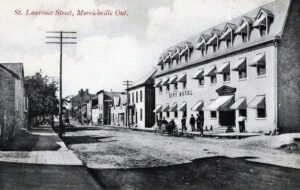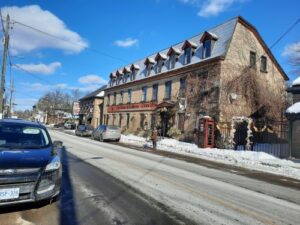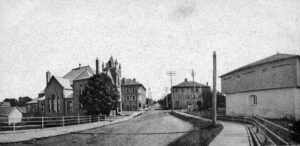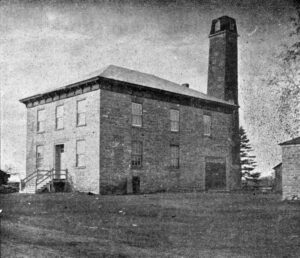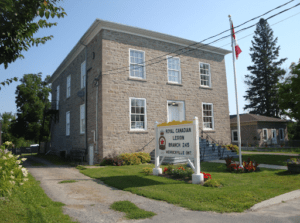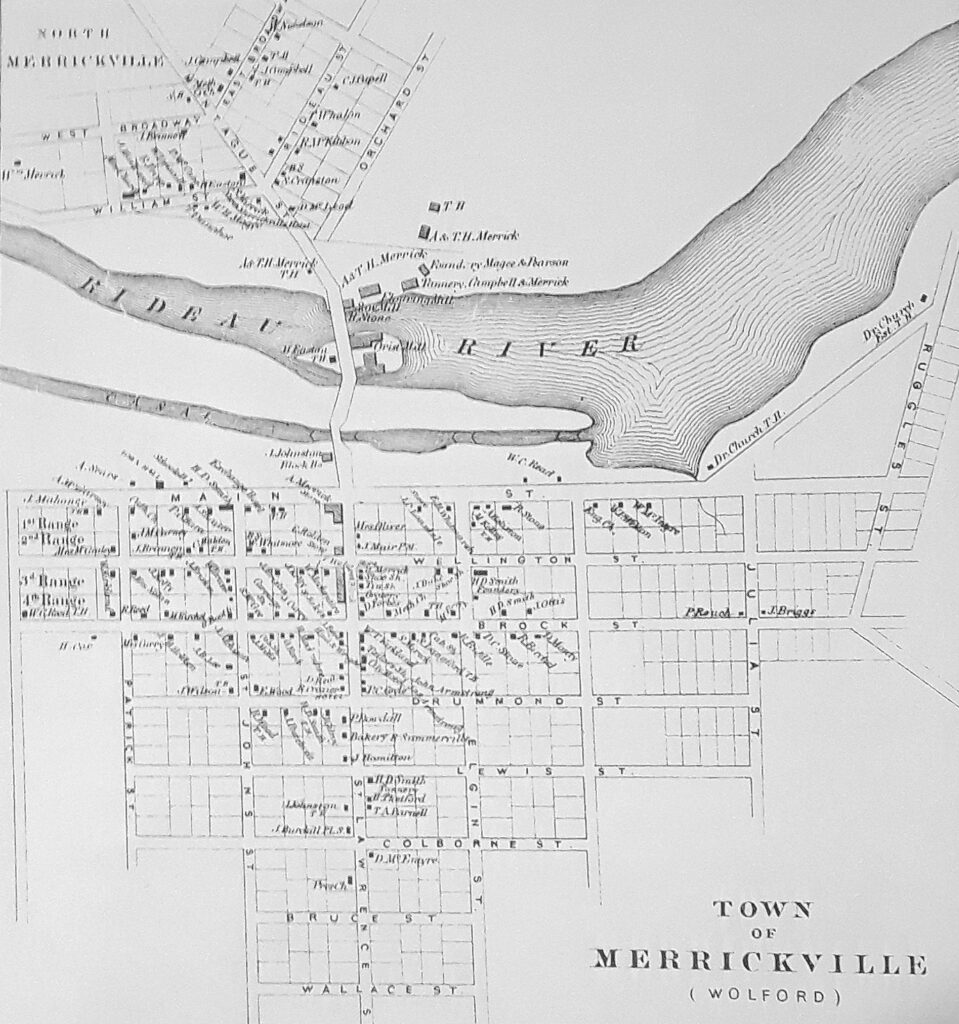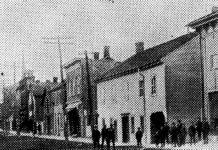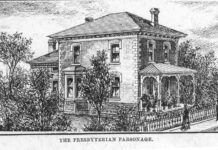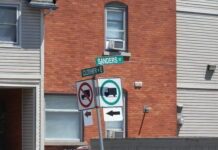Merrickville: “An incorporated village, situated on the Rideau Canal. It does a large trade in lumber and has good water power, extensive sole leather tannery and woolen factories, flour, grist and saw mills. It has also one grammar, one separate and two common schools. Population about 1,200.” More than 200 businesses were operating there, and the reference to the good water power accounts for many of these. There were at least fourteen mills, tanneries and factories in Merrickville in 1865, as well as four hotels and a “private boarding house”. One location, the City Hotel on St. Lawrence Street, remains in business as the Goose & Gridiron restaurant.
The City Hotel, St. Lawrence Street, Merrickville, c. 1905, and the building today.
The Mirick family (that is how they still spelled the name in 1865) owned a number of important business ventures, including A. and T. H. Mirick, the proprietors of the Merrickville flour and saw mills, dealers in grain and lumber; and S. H. Mirick & Sons, proprietors of the Merrickville Woolen Mills. George Mirick worked for the same company as a “manufacturer of woolen cloth, etc.”
The South Merrickville Foundry was owned by H. D. Smith, on Elgin.
There were two newspapers publishing in Merrickville. Hall & Wright published the Mirickville Chronicle, while J. H. Parnell was Editor, and T. A. Parnell, Anglican minister, was the proprietor of the weekly Canadian Churchman, on Main Street.
A man named S. Cayler, described as an ambrotype artist, had a business on Rideau St. Ambrotype was a relatively new photographic process which, like the daguerreotype, which it replaced, and like the prints produced by a Polaroid camera, produced a unique original that could only be duplicated by using a camera to copy it.
On the Rideau Canal, A. Johnston was the Lockmaster, and John Johnston, probably related, was a locksman, as were Charles and P. O’Hara
The Merrickville Town Hall and Fire Tower, 1912. This building is now the home of the Royal Canadian Legion Branch 245.
One unusual profession was followed by Dr. E. J. Kelly, who is described as a physician, surgeon and accoucheur, in his premises on St. Lawrence. An accoucheur was a mid-wife.
In this snapshot of Merrickville in 1865, we find a town that is larger than Kemptville, with almost twice as many businesses operating in a very busy village.
In 1861, Merrickville’s population had been 908, and that of Wolford, 3,000.






